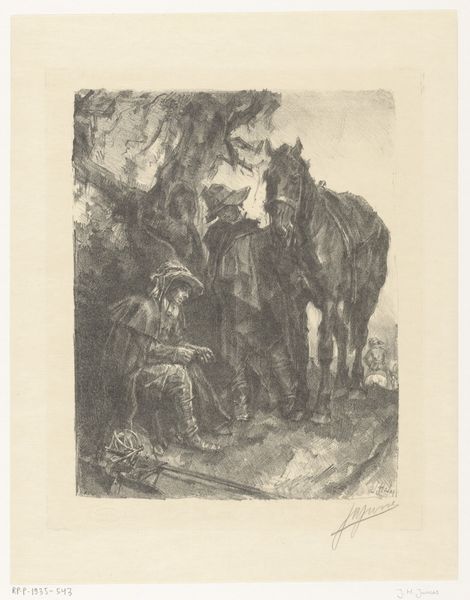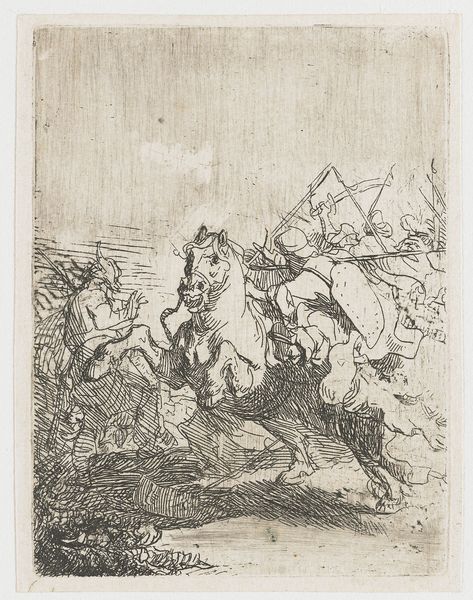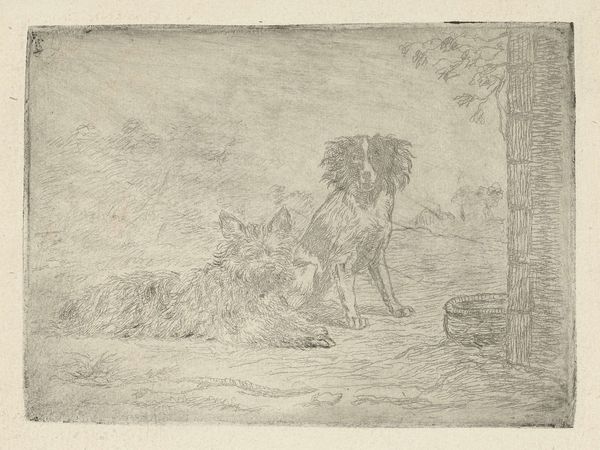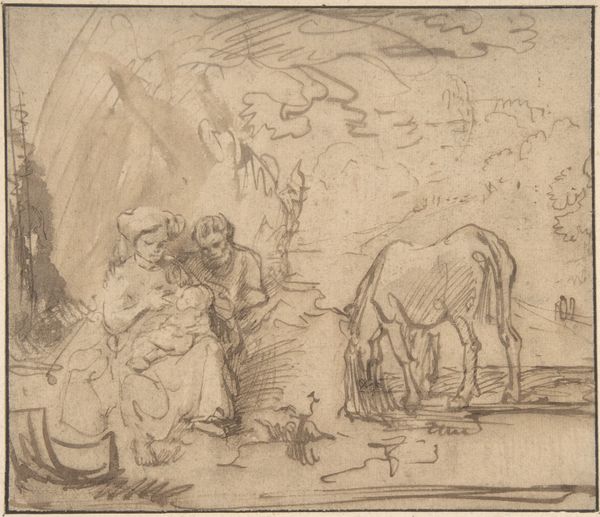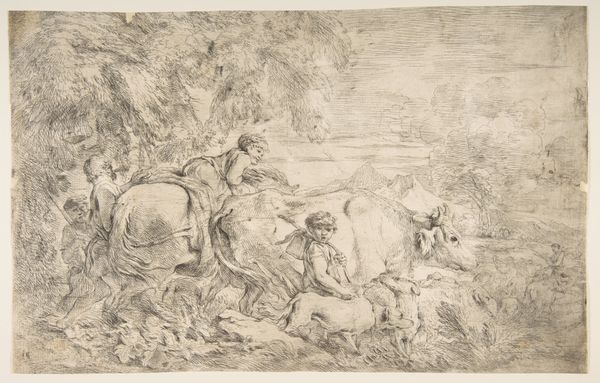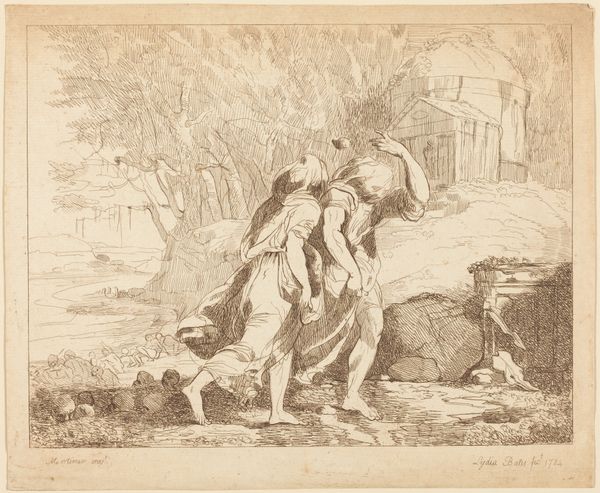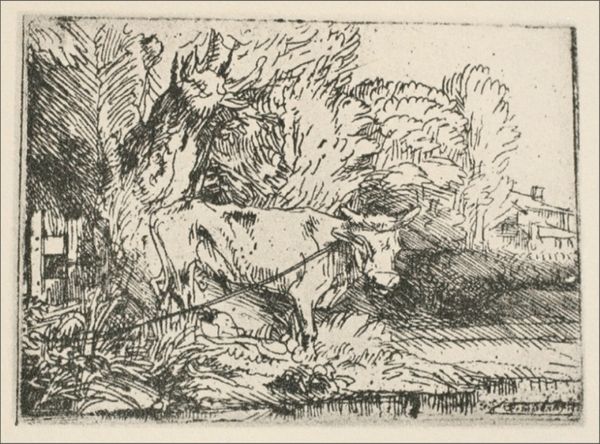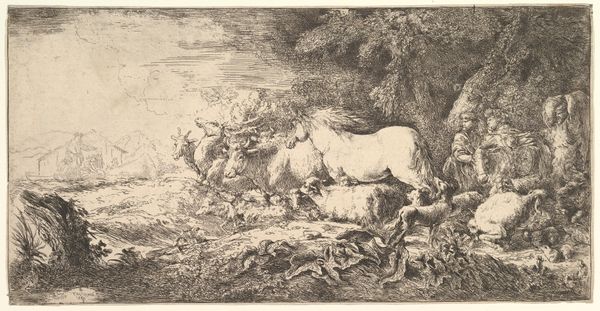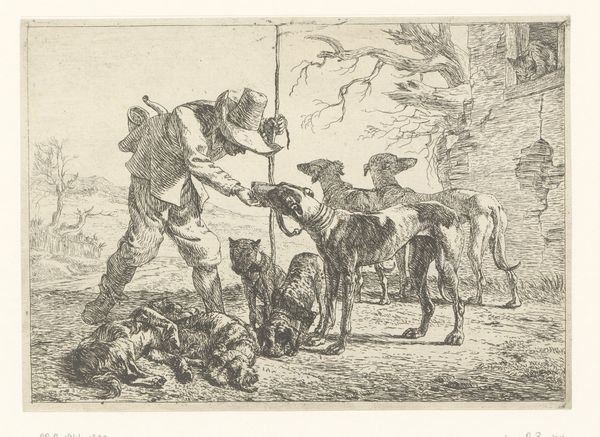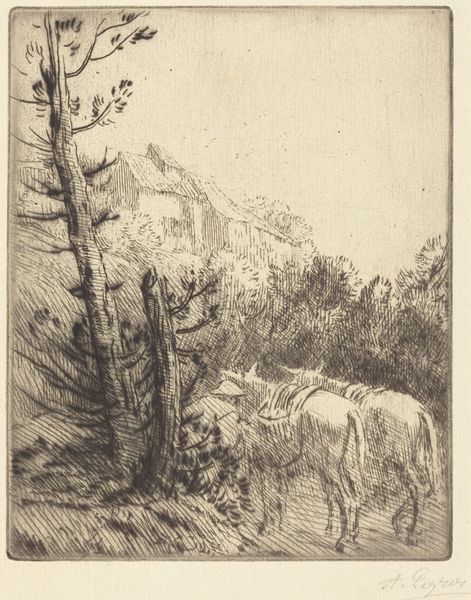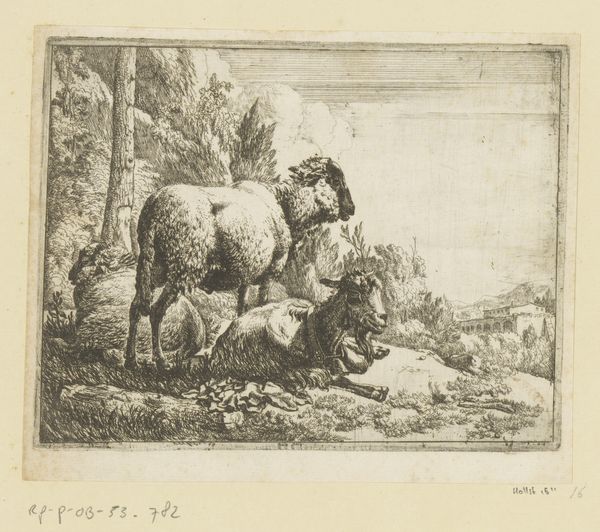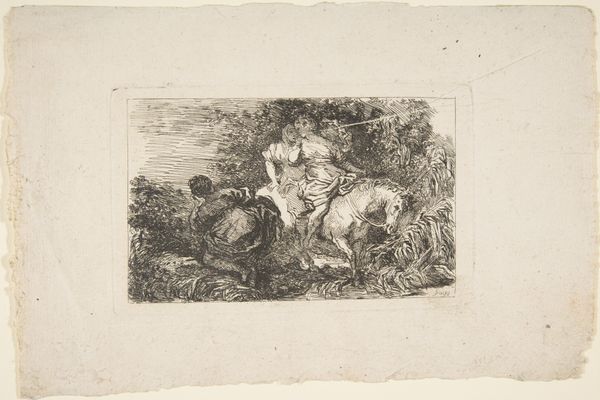
print, engraving
#
baroque
#
animal
# print
#
landscape
#
engraving
Dimensions: height 92 mm, width 123 mm
Copyright: Rijks Museum: Open Domain
Curator: Well, this is… charmingly rustic, I suppose? What do you see in it? Editor: At first glance, I'm struck by a melancholic stillness. The weight of the lines and the subject matter—a resting donkey—create a very subdued mood. Curator: Indeed. Here we have "Rustende ezel", or "Resting Donkey," an engraving attributed to Paul Troger. Although the dating is a bit vague, we place its creation somewhere between 1708 and 1762. The work is currently held in the Rijksmuseum. Editor: I’m fascinated by the enduring symbolic power of the donkey across cultures and centuries. From its association with humility in religious contexts to its more… let's say stubborn representation in folklore, the donkey embodies a compelling range of human characteristics. Here, the artist uses that symbolism and gives us something familiar, almost universal. Curator: Considering the likely period in which this piece was made, it’s important to think about its role within the broader artistic landscape. Images like this would circulate, not necessarily for the elite art market but for a broader public consumption, fostering visual literacy. Editor: And note how Troger crafts the animal: those deep lines suggesting the fur’s texture, and the dark hatching indicating shadows... the artist is very aware of imbuing a real, tangible presence. It's less about idealized beauty and more about capturing the donkey's essence. Curator: And it may hint at how Baroque artists looked back at their High Renaissance predecessors in how they looked to antiquity and the pastoral settings within it. Editor: That raises an interesting point – this engraving is a democratic, replicable form of art – a far cry from some exclusive painting for nobility. Curator: Right. Art's purpose and reach transformed considerably during this period. Editor: Exactly. And images like this certainly played their role in shaping cultural perceptions, no matter how small and seemingly insignificant it appears. This isn't just a resting donkey; it’s a testament to a shift in how art functioned in society. Curator: A moment of quiet observation immortalized, if you will. Editor: I think so too, and thank you. The donkey seems less passive, almost meditative. It brings the animal closer to us, the viewers.
Comments
No comments
Be the first to comment and join the conversation on the ultimate creative platform.
